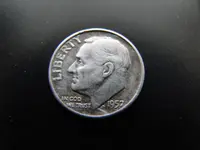usa2stay
Jr. Member
- Joined
- Aug 10, 2011
- Messages
- 39
- Reaction score
- 8
- Golden Thread
- 0
- Location
- San Antonio, TX
- Detector(s) used
- Xterra 305
Xterra 705
I am sure there are more than a dozen variables, but ignoring the "Butterfly Effect," what do you think causes coins to migrate deeper into the soil over time? Is there a rule of thumb that can be applied? For example, in the same lot, if a quarter is down 2 inches and another quarter is down 4 inches, what would you guess the difference in time between the two to be?
Upvote
0




